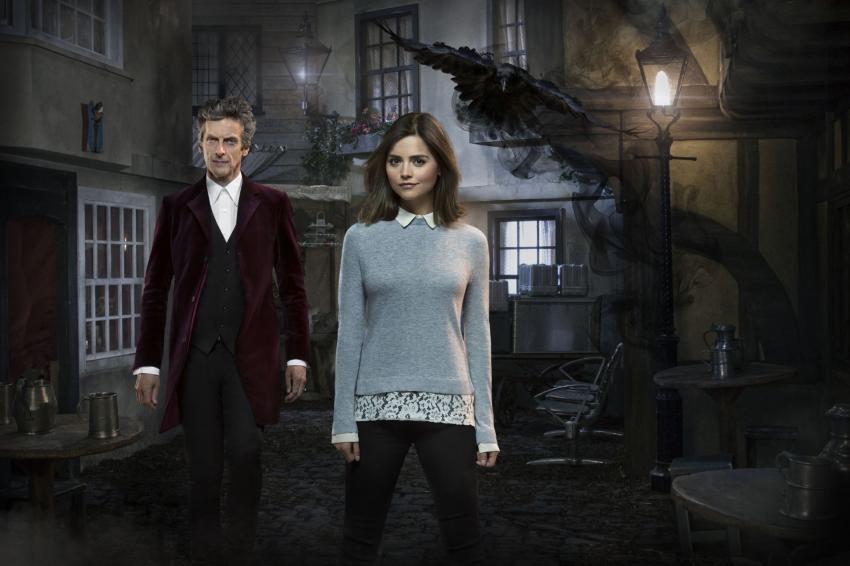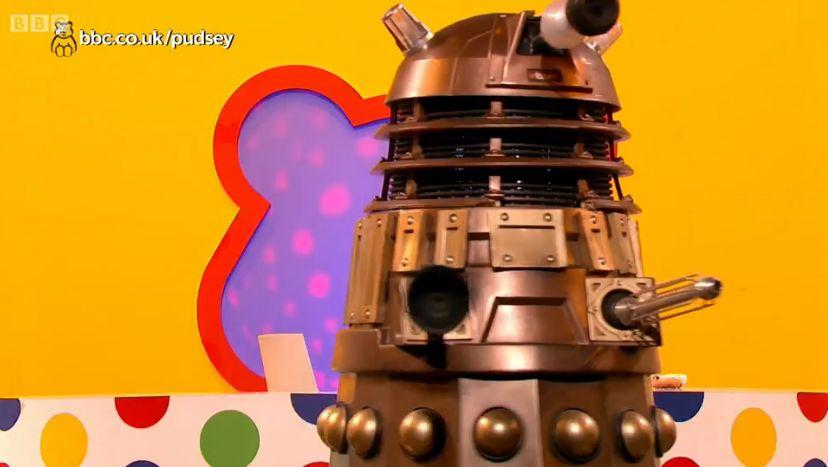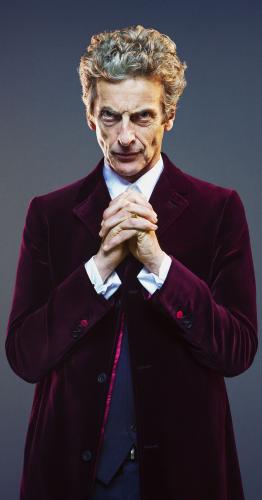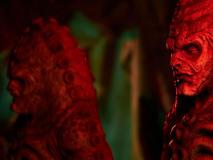 This item Contains Plot Spoilers
This item Contains Plot Spoilers Press reaction to the latest Doctor Who episode,
Sleep No More is varied with
The Guardian calling the episode one of the scariest of the series.
"There’s a terrifically chilling premise underpinning this political satire. A corporate efficiency drive pushed to disastrous extremes by a mad scientist might have come over heavy-handed, but for all the technical accomplishment (and it is very accomplished), the exquisite beats of Gatiss’s imagination see him deliver Doctor Who at its most Doctor Who-like. Monsters made out of sleep in your eyes? That is good." The Telegraph enjoyed the performance of
Reece Shearsmith as the perfect horror villain. "
The part as written was somewhat hammy, with the deranged Rassmussen variously hyperventilating to camera and outlining his plan, evil-genius fashion, to the Doctor. Shearsmith, however, introduced a note of creepy understatement. Rather than portray Rassmussen as a lunatic in a lab-coat , he brought a chilling whiff of true-life psychosis."In contrast
The Express found the episode puzzling with a disappointing monster.
"The adventure, penned by seasoned Doctor Who writer and Sherlock co-creator Mark Gatiss, made sure the questions kept coming but without answering any of them. While keeping us in the dark was probably the intention, it grew increasingly infuriating as the episode went on and even more so because of the Doctor's speculative theories about what on earth was going on. He's the Time Lord, he's supposed to know everything. If the Doctor doesn't know what's going on then we're in trouble." Radio Times called it the spookiest episode yet.
"The found footage format works extremely well. I imagine this was incredibly time-consuming to plan, shoot and edit, so full marks to director Justin Molotnikov, making his Doctor Who debut"Metro also found the episode scary, praising the unusual nature of the story.
"Sleep No More may be this year’s second base-under-siege story but it represents a first for Doctor Who. With its first-person point of view and lack of incidental music – and, for the first time in the series’s history, no opening titles – it feels more like The Blair Witch Project than a traditional Who adventure. Combining the characters’ point of view with CCTV footage creates a more intimate and visceral experience, with its jerky movement and tighter field of vision. There are no wide-angle or tracking shots, which only adds to the sense of claustrophobic paranoia".Digital Spy found much to like in the story, even if it felt the premise didn't quite work.
"This outing delivers some effective monsters. The explanation for the rise of the Sandmen may be seriously wonky - even by Doctor Who's flimsy scientific standards. But the found footage conceit makes for a chilling portrayal, only allowing us brief, shadowy glimpses of this week's threat."Den of Geek was disappointed with the story.
"Probably the biggest criticism I have though was that Sleep No More wasn't, for me, that entertaining to watch. It's a brave and bold move to commit to found footage for 45 minutes of Doctor Who, and I love that the show took such a risk. Yet it never gelled, and ultimately felt longer than its 45 minute running time. I found myself warming to some of its moments, but really not to its whole."TV.com felt the style of the story half worked.
"It was all an interesting departure from what we've been seeing from Doctor Who for the last 50-plus years, and in that regard, I applaud the ambition. But I think it could have been done better. Justin Molotnikov, who directed the episode, did a fine enough job framing the shots tightly to lend an air of claustrophobia to the proceedings, but the result of this filming style also meant it was often difficult to see what was going on."This theme was echoed by
Games Radar.
"The experimental format comes at the expense of clarity, with the murky lighting and erratic shifts in point of view making the action a struggle to follow. It doesn’t stick to its own rules either, abandoning the desaturated CCTV effect of the “eye in the sky” footage on a whim, while the camera is frequently placed in improbable positions even for the dust – inside the Tardis as it dematerialises, for example. It lacks the necessary rigour that makes The Blair Witch Project and its ilk so effective."Mashable felt Reece Shearsmith was the best thing in the episode, but disliked the concept of the Sandmen.
"Eye booger monsters? We're really scraping the bottom of the mundanity barrel here. What next? Demons composed entirely of snot? It's possible that the monsters were more ethereal and ghost-like in earlier drafts, which would explain why the soldiers never once shoot at them. (If they're composed of mucus, maybe just fire some Kleenex in their direction, guys?) "TV Fanatic called the episode overambitious and morned the loss of the opening title sequence, missing from the episode for the first time in its history.
"While I enjoyed the “found footage” approach, I must confess I missed the Doctor Who theme/intro terribly."The Register felt the episode was darkly comic.
"Much of this ep is a pleasing monster-chasing romp high up above Neptune, but it's a mystery, too: like having something puzzling on your mind that keeps you awake all night."Finally
IGN called the episode a good standalone horror story.
"The moment that is sure to give nightmares is in that last shot, as Rassmussen reveals the true nature of his, or rather the Sandmen’s, plan. As he cleans the sand out of his eye and half his face collapses, the Doctor’s suspicion that none of this has made any sense is confirmed. And frankly, I’m still trying to unpack what it all means".
You can read the Doctor Who News review in our
reviews section.
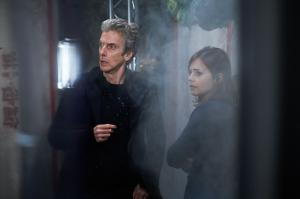


 4.0 million viewers watched Doctor Who:
4.0 million viewers watched Doctor Who: 